AquaHacking Innovation Challenge
Projects Sponsor
In 2016 AquaAction launched the 10-month AquaHacking innovation program for freshwater, offering intensive mentorship to diverse youth participants willing to dip their toes in water tech. Since 2023, AquaAction has run four AquaHacking Challenges in key regions of Canada that are in need of innovative solutions to their water issues. With over 3000 participants and 80 water tech startups launched across North America—including in under represented regions and communities—and 30 new companies spawned since 2023, collectively AquaAction and AquaHacking has generated over $200 million annually. By encouraging the next generation of water tech entrepreneurs to tackle urgent water challenges with ground-breaking ideas, the AquaHacking initiative is turning the tide on our global water crisis.
The AquaHacking Challenge was launched to close a critical innovation gap in Canada’s water sector. The global water crisis, fueled by demand, pollution and climate change, directly impacts Canadian communities despite our water abundance. Locally this means regional scarcity, drought, and water quality degradation from pollution—impacting agriculture, daily life and most notably, affecting Indigenous communities.
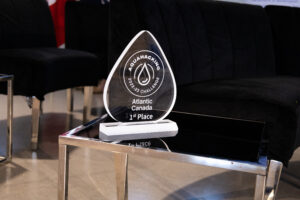 As extreme weather intensifies, flooding and drought damage infrastructure and strain resources, leading to significant economic and health burdens while creating social stress.
As extreme weather intensifies, flooding and drought damage infrastructure and strain resources, leading to significant economic and health burdens while creating social stress.
Despite these growing water-related challenges, which include stormwater overflows, invasive species, saltwater intrusion, and aging infrastructure, key actors affected including municipalities, industries, and communities, lacked cost-effective ways to access the R&D talent focused on these issues—another resource Canada is literally awash in. It was clear to the AquaAction team that engaging and nurturing emerging solution providers was key to addressing Canada’s diverse water challenges and that a different kind of challenge might offer a solution.
Regions like Atlantic Canada and the Prairies were underserved, with few pathways for local innovators looking to turn promising water-tech ideas into scalable, tested solutions. The AquaHacking Challenge was designed to bring youth-led innovation across all of Canada to the forefront. The goal was to lower the barriers to entry for water entrepreneurs and catalyze community-driven economic and environmental impact.
By engaging multidisciplinary teams of young innovators to solve pressing water problems relevant to their regions, AquaAction is working to seed the next generation of water-tech startups. Funding mentorship and pilot opportunities that turn prototypes into sustainable businesses are key aspects of the program. Robust programming—including mentorship, legal and business workshops and immersive bootcamps—educates and mobilizes emerging water stewards.
AquaAction recognized that fostering strategic partnerships with governments, researchers, and industry leaders would ensure that each innovation was grounded in real-world needs.
They also sought to drive local impact by supporting the creation of jobs and ventures that contribute to community resilience and freshwater stewardship. Tackling region-specific water issues through targeted challenges that channel entrepreneurial energy into solving today’s most urgent threats to water quality and availability was also a key project goal.
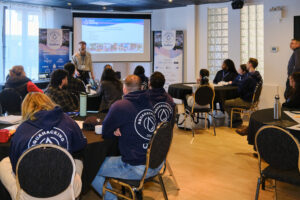 Prior to launching the challenge, the team conducted a review of academic studies, government reports, and NGO white papers to determine the most urgent regional freshwater challenges. They interviewed regional water managers to validate these priorities. From this long list of potential themes, five top focus areas were identified, becoming the project’s official challenge statements. By zeroing in on the region’s highest impact issues, they ensured participating teams would work on problems with both local relevance and scalable solution potential.
Prior to launching the challenge, the team conducted a review of academic studies, government reports, and NGO white papers to determine the most urgent regional freshwater challenges. They interviewed regional water managers to validate these priorities. From this long list of potential themes, five top focus areas were identified, becoming the project’s official challenge statements. By zeroing in on the region’s highest impact issues, they ensured participating teams would work on problems with both local relevance and scalable solution potential.
A map of the existing freshwater innovation landscape was drawn up by surveying universities, incubators, NGOs and provincial departments of the environment. Funding sources, mentorship networks, pilot site hosts and potential corporate partners were identified. The scan revealed critical ecosystem gaps such as limited seed stage mentorship tailored to water tech, inconsistent access to real-world testing sites and a lack of public-private convening forums. These insights directly informed the AquaHacking model which integrates dedicated technical mentors, secures pilot site agreements upfront, and stages high-visibility regional showcases.
To measure the program’s future educational impact, the team administered an online “Water Awareness” quiz to tech-savvy students across provincial universities gauging their baseline knowledge of freshwater science and policy. Focus groups with student innovation clubs helped identify barriers to participation. The participants’ average pre-quiz score highlighted a clear need for foundational water literacy content.
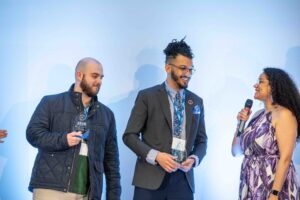
Feedback showed that students valued hands-on problem-driven learning over lectures. These findings helped design the AquaHacking workshops as well as a new education platform, as well as the AquaHacking structure, where balancing technical briefings with rapid prototyping sessions helps boost engagement and learning outcomes.
Based on their mapping and interviews the team invited water sector experts to join their steering committees for each challenge. These experts reviewed the proposed challenge statements, mentorship framework and judging criteria. The advisory committees refined the challenge briefs for clarity and feasibility, recommended additional judging rubrics and validated our selection process for teams. Their endorsement was instrumental in securing early buy-in from funding partners.
Systematically researching the freshwater landscape where the AquaHacking Challenges are conducted means participants enter each of them with a focused set of challenges, a robust support ecosystem and a baseline against which to measure the Challenge’s educational impact. This groundwork underpinned every aspect of the program’s design and contributed directly to the outstanding outcomes already achieved.
Work began in 2015 and the AquaAction team has already run fifteen challenges across Canada and the U.S.
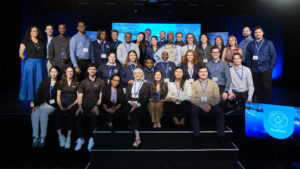
Since 2023 four Challenges have been completed: Atlantic Region 2023, Quebec (Provincial) 2023, Great Lakes 2024, Quebec (Lac Osisko) 2025, and a Challenge in the Prairies currently under way. A binational challenge will also be held in the Great Lakes and St-Lawrence in Q1 2026.
Keeping it regional and thus relevant, the AquaHacking Atlantic 2023 Challenge focused on water issues specific to the Atlantic Canada region, which has historically been underserved in terms of access to water innovation and technology development. Stormwater overflows, microplastic pollution, saltwater intrusion, invasive species, and aging infrastructure were part of the focus.
The AquaHacking Quebec 2023 Challenge also focused on regionally urgent water issues that aligned with broader environmental priorities in the province—recreational boating, shoreline erosion, the quality of urban streams, and sensitive habitats of the St. Lawrence River being some.
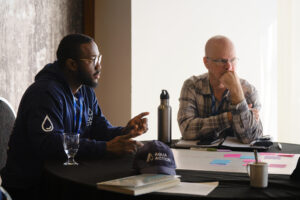
Microplastics pollution was also one focus of the AquaHacking Great Lakes Challenge 2023–24, as was nutrient management and nutrient cycling, PFAS (“Forever Chemicals”) contamination and lead contamination. The AquaHacking Québec Challenge 2025 included revitalizing watersheds impacted by mining and industrial activities, particularly Lake Osisko in Rouyn‑Noranda, a remote, underserved community.
The success of AquaAction’s AquaHacking Challenge has inspired replication with expansion underway across Canada and the U.S.
By empowering young people to not just build startups but become leaders of water innovation and sustainability, AquaAction’s AquaHacking Challenge is opening the floodgates on aquatic R&D talent—helping us all downstream.













